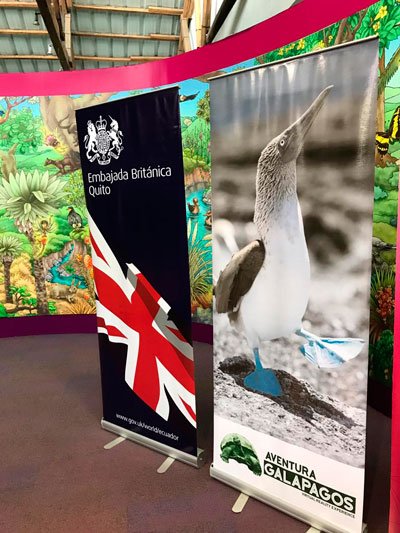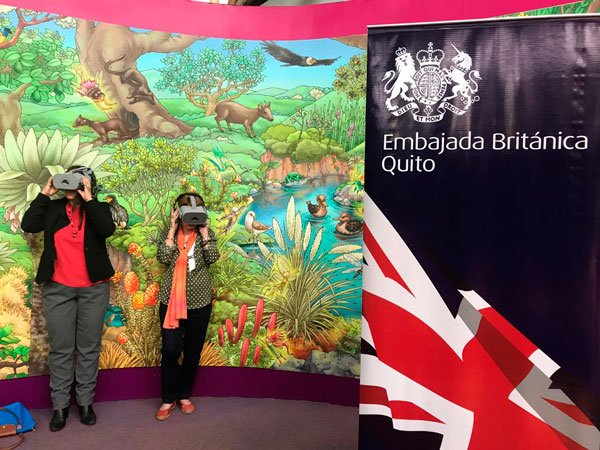
Thanks to an initiative led by the British Embassy in Quito and Atlantic Productions, virtual glasses with the short "Galapagos Adventure" will be available for the month of July and August in Galapagos in our Research Station.

The virtual experience will be available in our “Marine World” Exhibit located on Santa Cruz Island in Galapagos. Reservations can be made Monday through Friday between 8am to 12:00 pm and 2:30 pm to 4:30 pm by sending an email to cdrs@fcdarwin.org.ec.
Ambassador Katherine Ward has indicated, "We are going to bring the Galapagos children a special edition in virtual reality. They will be able to see Galapagos as if they were traveling in a helicopter and also in a submarine."

On July 2nd a symbolic launch will take place in Quito with the presence of the Mayor of the City. In Quito, Aventura Galápagos will be shown until April 2020 at the Interactive Museum of Science (MIC) which is part of the Museums Foundation of the Metropolitan District of Quito.

Aventura Galápagos is a short video produced in virtual reality format that shows professional images filmed during the production trip to the islands and highlights the natural heritage of the archipelago. Its central theme is to promote the importance of conservation and responsible management. The virtual reality project will provide the opportunity for children, teenagers, and the general public to meet and experience our Galapagos Islands in a different way, using new technologies.
Our Communication Manager, Paola Díaz Freire, tells us that "the idea of this project began last year and it is very exciting that the young people of Quito will be able to access the Galapagos virtually, and they can learn and experience the islands this way."
Aventura Galápagos is part of the Bilateral Cooperation Funds program of the British Embassy Quito, whose priority is to promote education and care for the environment. Likewise, it strengthens the relations of the United Kingdom with Ecuador, in particular, the link with the Galapagos Islands, marked since the arrival of Charles Darwin to the archipelago in 1835, and on which he based his renowned Theory of Evolution in this unique World Heritage Site.





